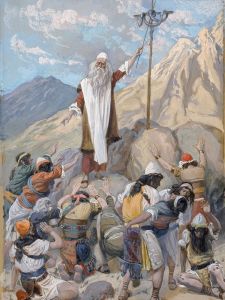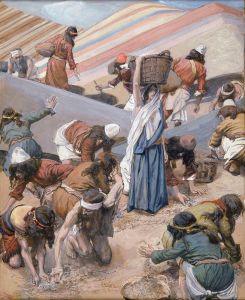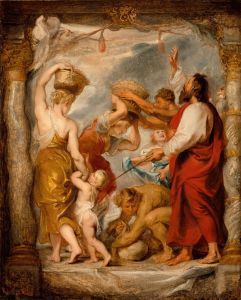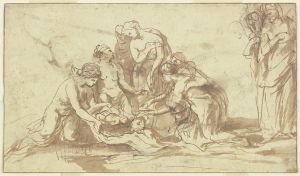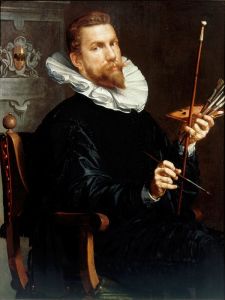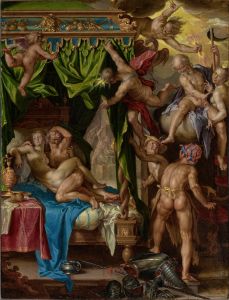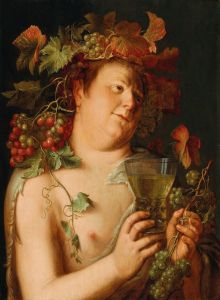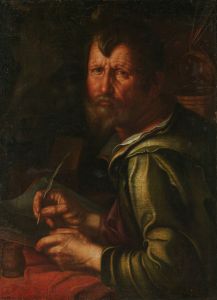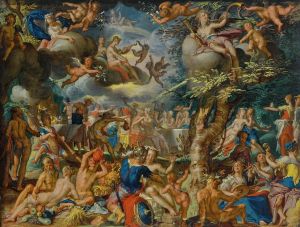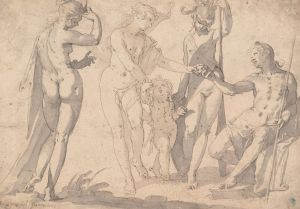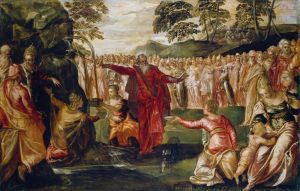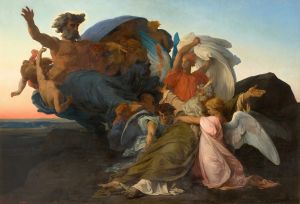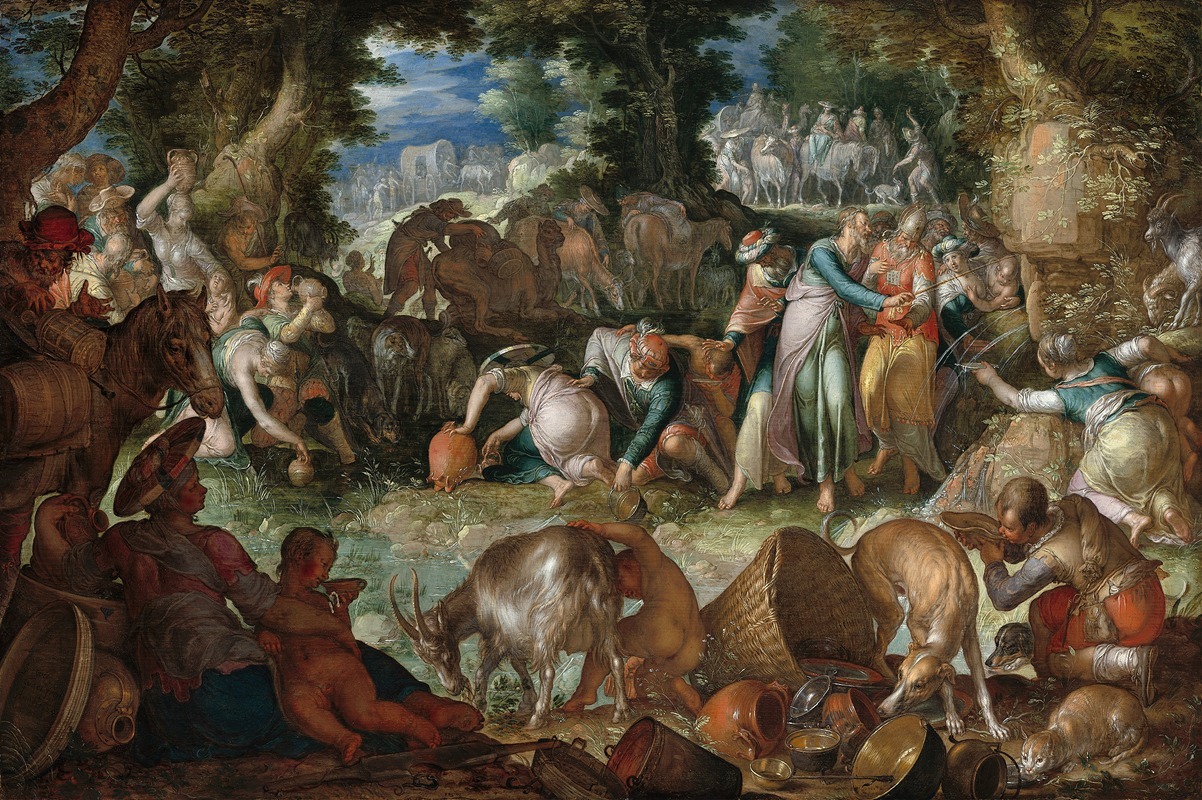
Moses Striking the Rock
A hand-painted replica of Joachim Wtewael’s masterpiece Moses Striking the Rock, meticulously crafted by professional artists to capture the true essence of the original. Each piece is created with museum-quality canvas and rare mineral pigments, carefully painted by experienced artists with delicate brushstrokes and rich, layered colors to perfectly recreate the texture of the original artwork. Unlike machine-printed reproductions, this hand-painted version brings the painting to life, infused with the artist’s emotions and skill in every stroke. Whether for personal collection or home decoration, it instantly elevates the artistic atmosphere of any space.
Joachim Wtewael's Moses Striking the Rock is a painting created by the Dutch Mannerist artist Joachim Wtewael (1566–1638). Wtewael was known for his intricate compositions, vibrant use of color, and highly detailed works, often influenced by the Mannerist style that emphasized elegance and complexity. This painting depicts the biblical story from the Book of Exodus, where Moses strikes a rock to provide water for the Israelites during their journey through the desert.
The subject of the painting is derived from Exodus 17:1–7, a well-known episode in which the Israelites, suffering from thirst in the wilderness, complain to Moses. Following God's instructions, Moses strikes a rock with his staff, and water miraculously flows out to sustain the people. This scene has been a popular subject in Christian art, symbolizing divine providence and the faithfulness of God in providing for His people.
Wtewael's interpretation of the scene reflects his Mannerist tendencies, characterized by dynamic compositions, elongated figures, and dramatic gestures. The painting likely features a crowded composition, with Moses as the central figure, surrounded by Israelites in various poses of desperation, relief, and gratitude. The artist's use of vibrant colors and meticulous attention to detail would have been intended to draw the viewer into the emotional intensity of the moment.
Joachim Wtewael was active during the late 16th and early 17th centuries, a period when Dutch art was transitioning from the Mannerist style to the more naturalistic approach of the Dutch Golden Age. Wtewael, however, remained committed to the Mannerist aesthetic throughout his career, making his works distinctive among his contemporaries. His paintings often include complex arrangements and a sense of theatricality, which are likely present in Moses Striking the Rock.
The painting is part of Wtewael's broader body of work, which includes both religious and mythological subjects. While specific details about the provenance or current location of Moses Striking the Rock are not widely documented, Wtewael's works are held in high regard and can be found in major museums and collections around the world.
As with many of Wtewael's paintings, Moses Striking the Rock demonstrates the artist's technical skill and his ability to convey narrative through vivid imagery. It serves as a testament to his mastery of the Mannerist style and his contribution to the art of the Dutch Republic during a transformative period in European art history.





